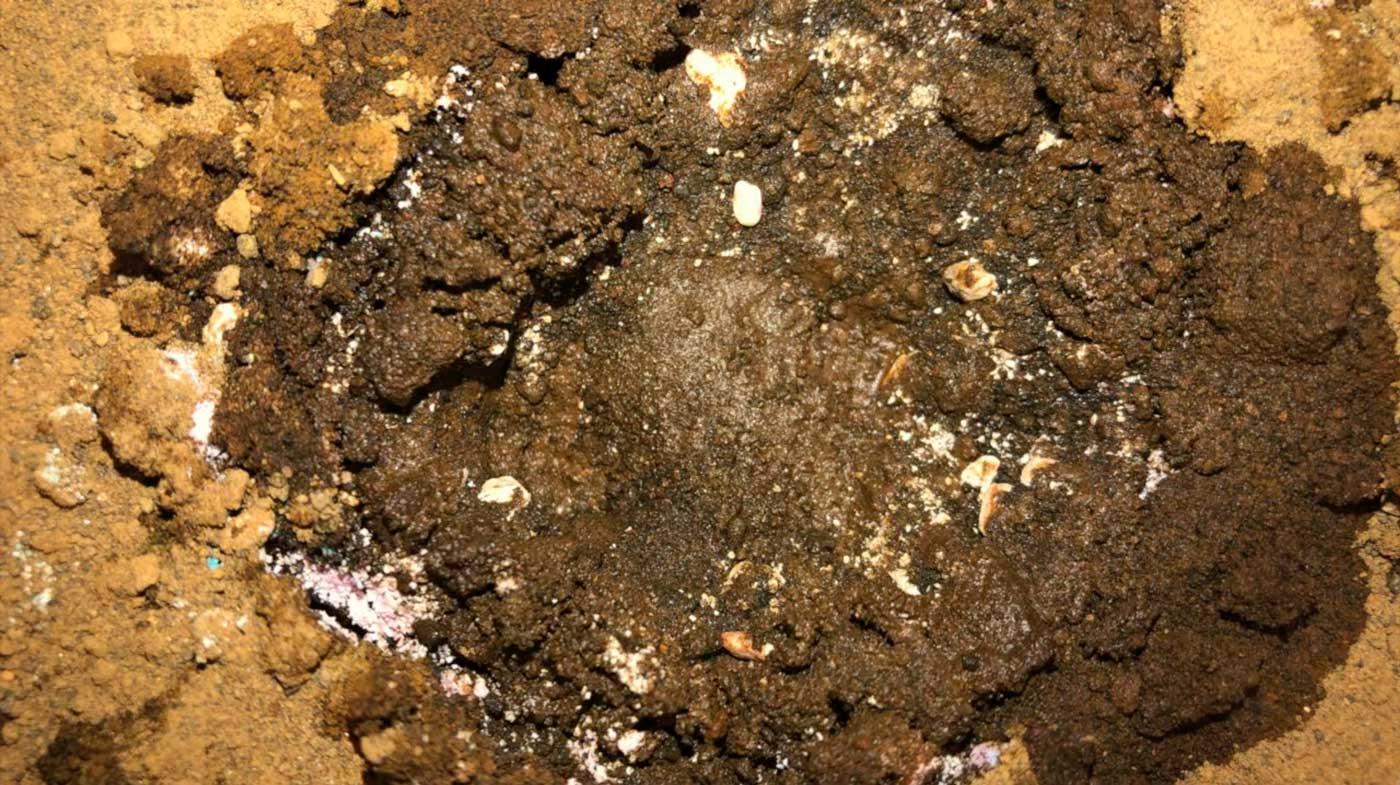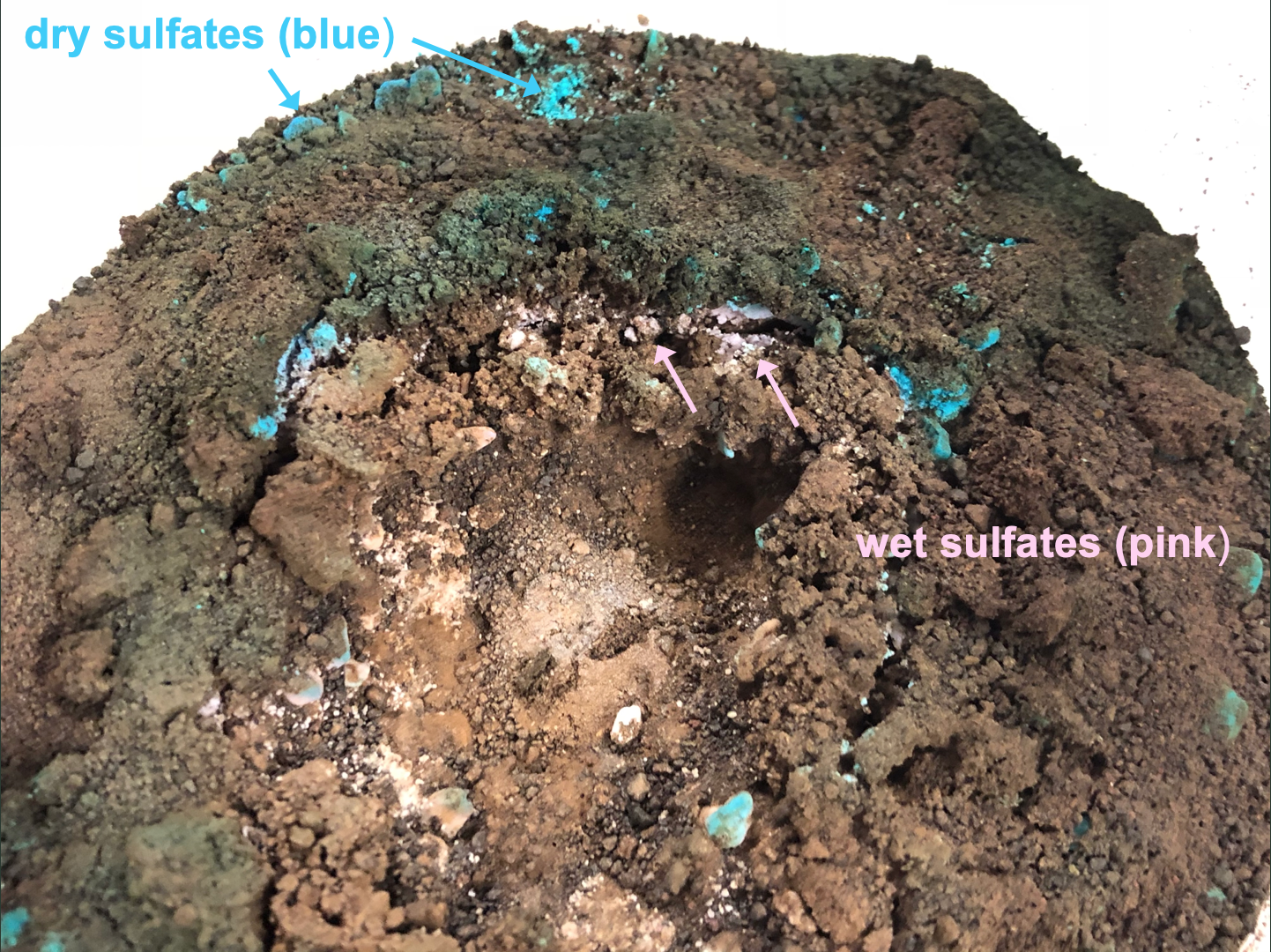The soil on Mars has large quantities of the elements sulfer and chlorine that may be affecting surface properties.

SETI Institute scientist Janice Bishop recently performed experiments in the lab to investigate how salts in the martian soil may be causing surface cracks and landslides.
The soil on Mars has large quantities of the elements sulfer and chlorine, that may be affecting surface properties. Janice prepared a Mars analog soil horizon using altered volcanic soil from Mauna Kea in Hawaii as the primary soil with layers of sulfate and chloride salts in the middle of the profile. Water was inserted into the lower layers and wicked up through the salt horizons towards the surface.
The sulfate used is an indicator material. It appears blue in the anhydrous form (a substance is anhydrous if it contains no water) and turns pink when hydrated. Janice was testing the premise that sulfates could be soaking up water from the system and providing it to the chlorides, which in turn can only hold a small amount of water before they liquify.

In the lab, Janice observed surface cracking in the Mars analog experiment at the salt/soil interface following several cycles of water absorption. The sulfates turned pink as expected in the hydrated regions and gaps formed with crusts above them where the chlorides had been, while sulfates in dry areas of the experiment remained blue.
Janice is reporting on this experiment and implications for Mars at the Geologic Society of America meeting in Indianapolis this week. Her results in the lab, combined with field observations of caves collapsing in Spain and sinkholes in Israel, may explain landslide-type activity on Mars causing the surface flow features observed there.





